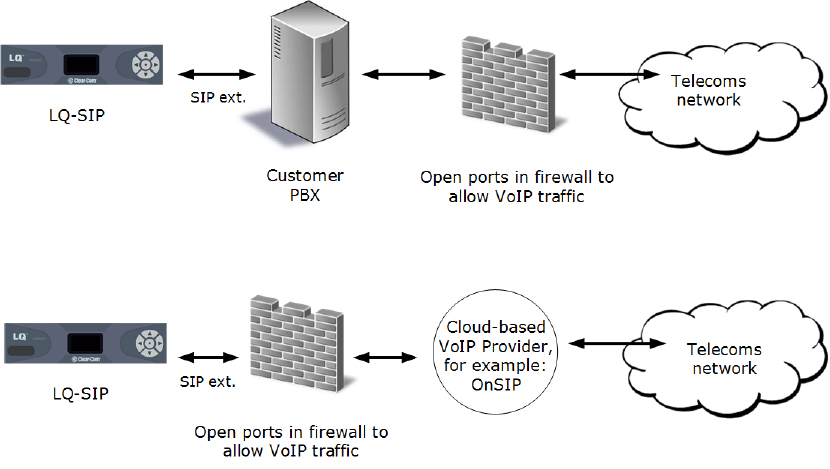


You save money on the initial setup as you don’t need to purchase extensive hardware. Thanks to this setup, your phone system lives on the cloud.

As we mentioned earlier, your service provider is the one looking after the servers. You’ll need phones, routers, and a broadband service to set up a hosted PBX. The first factor to consider when it comes to hosted PBX and SIP trunking is the cost to get your setup in place. Let’s look at each of the main differentiators between these two options.ĭifference #1: The initial cost of setup and hardware Great for sizeable workforce and a high volume of callsĭepends on the provider’s security standards Great for smaller number of concurrent calls Often dependent on licensing and support of the PBX platform Recommended for 20 employees, expansion to remote locations Handled by your IT staff (internal expertise required) Low if you already own PBX equipment on-premise Low if you have no PBX equipment on-premise Hosted PBX vs SIP trunking: 7 Differences You’ll enjoy more features and a better telephone service compared to traditional phone lines. In other words, if you already have PBX equipment in place, switching to SIP trunking is not only easy, but recommended. With SIP trunking, communication becomes reliable and speedy. You might be unreachable to your customers in crucial moments.Īs a result, you might see a company’s continuity break down. This old system can’t handle large volumes of calls. Without SIP (Session Initiation Protocol) in place, your business communications will rely on separate structures of voice and data communication. Read more: PBX vs VoIP: 25+ Top Differences Explained Benefits This will depend on your current business phone system. A VoIP gateway to connect your traditional PBX to the cloud.
#Sip trunk onsip software#
Unlike hosted PBX, where a third-party provider handles all required equipment and software on their premises, SIP trunking requires one of two things: This eliminates the need for additional lines you’d otherwise need to access the internet or send faxes. They don’t just carry voice, but also video, emails, and other data, all on the same line. SIP trunking replaces traditional landlines and offer huge versatility. Hosted PBX offers many benefits that extend to standard VoIP (Voice Over Internet Protocol) services, such as: You’ll never have to worry about maintenance costs, PBX software upgrades, or service downtime. With hosted PBX, there’s no need for on-premises PBX (Private Branch Exchange) equipment. Because it’s provided by an Internet Telephony Service Provider (ITSP), all you need for hosted PBX to start using VoIP communications are: Hosted PBX is deployed quickly and easily, often within a day. You may also come across virtual PBX, cloud PBX, cloud phone system, or hosted VoIP as other names for hosted PBX.Īt a technical level, hosted PBXs and SIP trunking relies upon the Session Initiation Protocol. In other words, a company that implements a hosted PBX solution doesn’t have to own or maintain any infrastructure, equipment, or software just to have a reliable voice communication solution. It connects directly to the public switched telephone network ( PSTN). You can jump straight into each difference between hosted PBX and SIP trunking right here:Ī hosted PBX service is a telephone system that’s managed completely off-site by a third-party service provider. In this guide, we’re taking you through them all and helping you make the most informed decision. To make your decision, it’s important to look at VoIP from all angles: finances, logistics, business expansion, and implementation. When you know you’ll be making calls over the internet instead of the traditional copper wires, you need a setup that will serve your company’s needs now, as well as in the future as you potentially grow. SIP trunking connects your existing on-premise PBX equipment to the internet. Hosted PBX is a cloud-based phone system solution entirely handled by a third-party service provider. One of the first questions that comes up: should I go with hosted PBX or SIP trunking?įirst things first, here’s the essential difference between the two: You want to connect your company’s phone system to the cloud and enjoy the benefits of VoIP.


 0 kommentar(er)
0 kommentar(er)
